Newsletters
August 2023 Edition
Euro 7 for Light-Duty
Late last year, the European Commission proposed the latest major “Euro 7” regulation for reducing criteria pollutant emissions from vehicles powered by internal combustion engines. 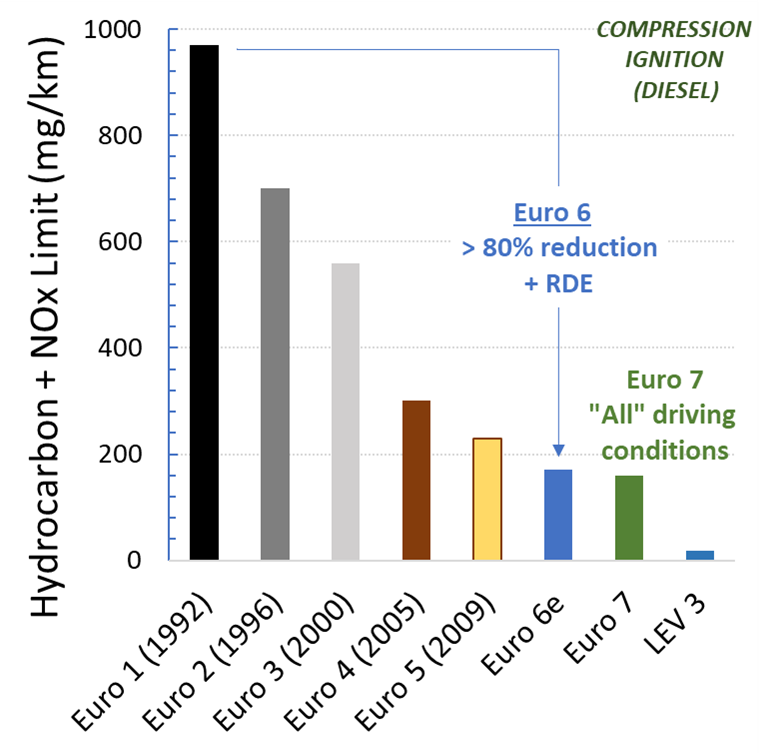 The proposed start date for these Euro 7 standards is July 1st, 2025 and will apply to all new light-duty vehicles.
The proposed start date for these Euro 7 standards is July 1st, 2025 and will apply to all new light-duty vehicles.
The proposal also includes provisions for heavy-duty vehicles, which will be addressed in a later issue.
As seen in this figure, compared to the early 90’s, modern diesels compliant with Euro 6 standards emit one fifth of the combined hydrocarbon and nitrogen oxides. And several recent studies show that emissions on road are as low as under laboratory conditions. Euro 7 takes this one step further by expanding the real-world driving conditions under which cars could be tested.
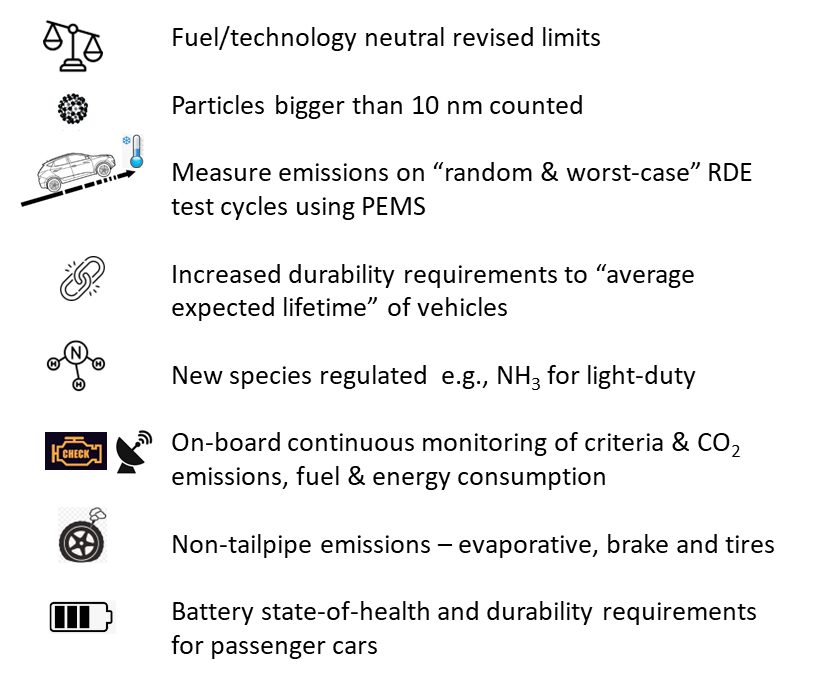 The broader elements of Euro 7 are shown in the graphics on this page. The NOx limits are kept at the same as for Euro 6 gasoline (petrol), but these also apply to diesels for which it results in a 25% reduction.
The broader elements of Euro 7 are shown in the graphics on this page. The NOx limits are kept at the same as for Euro 6 gasoline (petrol), but these also apply to diesels for which it results in a 25% reduction.
This is also effectively a tightening given that the “conformity factors” are eliminated – these were allowances given in Euro 6 for measurements under real-world driving using PEMS equipment. Now the limits are the same under lab or on-road tests. And the tests can be done for any driving conditions (unlike the urban, rural, motorway driving prescribed in Euro 6).
Other than gas emissions, there is an emphasis on reducing particulates, given the increased awareness of their health implications.
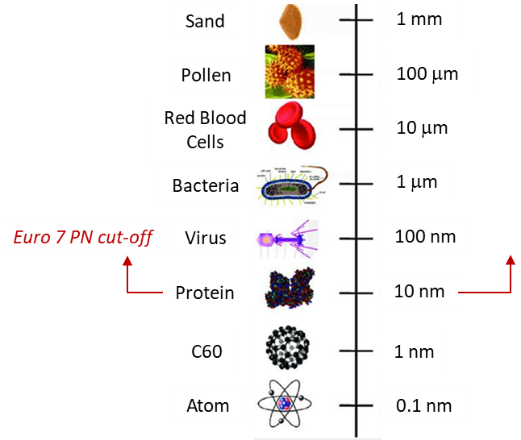 Starting Euro 7, particles down to 10 nm will be counted towards the particle number limit. Just to put it in perspective, 10 nm is roughly a tenth of the size of the Coronavirus!
Starting Euro 7, particles down to 10 nm will be counted towards the particle number limit. Just to put it in perspective, 10 nm is roughly a tenth of the size of the Coronavirus!
Also introduced are limits on new species such as ammonia for light-duty, and for non-tailpipe emissions such as brakes and tires. And with the increase in electrified vehicle share, there are requirements in place to monitor and ensure the health of batteries.
With the improvement of on-board sensors, regulators are moving towards continuous on-board monitoring of emissions and fuel consumption, with the possibility of transmitting the information to authorities (telematics). Other than ensuring clean vehicles through the end of life, this potentially also eases the burden for in-use compliance tests.
 With the recent announcement of the phase-out of tailpipe emitting vehicles by 2035, there are a lot of concerned voices regarding the efficacy of a new regulatory standard. However, it should be emphasized that once sold, new vehicles will continue to run on the roads for 10 – 20 years, and it is important to make sure that they use the best available technologies for low fuel consumption and emissions. The Euro 7 proposal provides a good balance in terms of not overly tightening limits and expanding the test conditions to ensure that vehicles are clean to their end of life.
With the recent announcement of the phase-out of tailpipe emitting vehicles by 2035, there are a lot of concerned voices regarding the efficacy of a new regulatory standard. However, it should be emphasized that once sold, new vehicles will continue to run on the roads for 10 – 20 years, and it is important to make sure that they use the best available technologies for low fuel consumption and emissions. The Euro 7 proposal provides a good balance in terms of not overly tightening limits and expanding the test conditions to ensure that vehicles are clean to their end of life.
Dr. Ameya Joshi
SEMTECH Global News Contributor
U.S. Representative Debbie Dingell Visited Sensors
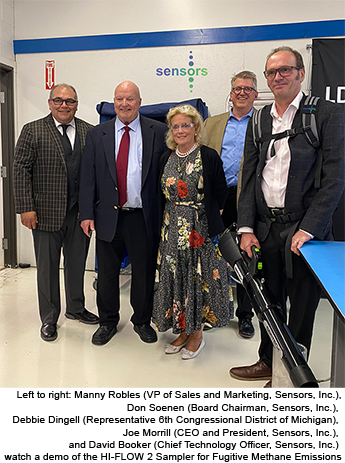 Our very own 6th Congressional District of Michigan representative – Congresswoman Debbie Dingell visited Sensors on June 29, 2023.
Our very own 6th Congressional District of Michigan representative – Congresswoman Debbie Dingell visited Sensors on June 29, 2023.
Sensors’ President/CEO Joe Morrill, along with Board Chair Don Soenen, gave a tour to showcase our innovative technology to measure vehicle emissions and to quantify fugitive methane leaks.
Mrs. Dingell offered, “There is always important work going on in the heart of the 6th district. I toured Sensors Inc this week and heard about the sensors they are building to monitor vehicle emissions and the piloting sensors they are developing for methane.”
We were honored to have the Congresswoman visit and the opportunity to demo our newest products.
Fugitive Methane testing with the SEMTECH HI-FLOW 2
For more than 20 years, Sensors’ SEMTECH® product line has been accurately quantifying mass-based anthropogenic greenhouse gas emissions (e.g., combustion of fossil fuels) in the transportation sector by combining real-time gas analysis with flow measurements. During this period, tighter emission regulations requiring new technology-based solutions and better measurement instrumentation have regularly been introduced worldwide. For example, in the latest GHG proposed USEPA rules, 2027-2032 vehicle model year rules are expected to cut 9 billion tons of CO2 (April 2023) through 2055.
However, fugitive emissions which represent a significant proportion of anthropogenic greenhouse gas emissions have been largely overlooked by stakeholders. This landscape is changing rapidly as the world looks at solutions to address the threat of global warming.
Sensors SEMTECH® brand and expertise uniquely fits into this emerging opportunity.
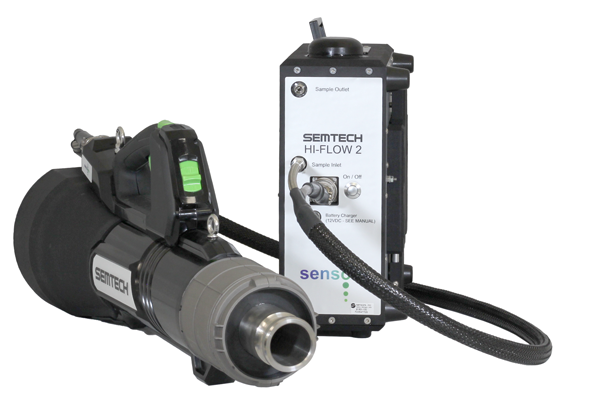 Last year Sensors successfully launched a new SEMTECH® product line, the HI-FLOW 2, for the accurate quantification of fugitive methane emissions in the oil and gas upstream (oil and gas exploration and production), midstream (transportation and storage) and downstream (which includes refining) sectors.
Last year Sensors successfully launched a new SEMTECH® product line, the HI-FLOW 2, for the accurate quantification of fugitive methane emissions in the oil and gas upstream (oil and gas exploration and production), midstream (transportation and storage) and downstream (which includes refining) sectors.
Methane is a potent GHG and its 100-year global warming potential is currently estimated to be 28 times that of CO2. Moreover, it is responsible for around 30% of the rise in global temperature since the industrial revolution). In 2022, the USEPA estimated that 1.4% of all methane produced is lost by leaks but, many believe this figure is much higher.
Not surprisingly, the USEPA recently (November 2022) issued a New Source Performance Standards (NSPS) and Emissions Guidelines to reduce methane and other harmful pollution in the oil and gas sector. (We intend to cover this regulation (e.g., subpart OOOOb/c) and the impact on the SEMTECH® products in a future newsletter.)
In this article, we would like to draw your attention to a relatively new initiative recently published (June 2023) by the American Carbon Registry (ACR, a nonprofit enterprise of Winrock International) to monetarize the plugging of orphaned oil and gas wells in the USA and Canada. The US Interior Department has documented the existence of 130,000 “orphaned” wells nationwide and an EPA study estimates that there are as many as two to three million abandoned wells across the nation. The USEPA recently estimated these wells will release about 20 million CO2 equivalent metric tons per year. By comparison, in the USA a typical passenger car will emit about 4.6 metric tons per year (assuming 22.2 MPG and 11,500 miles per year). This means that the number of abandoned and orphaned wells represents nearly the same emission as nearly 5 million cars on the road. That’s a lot of cars!
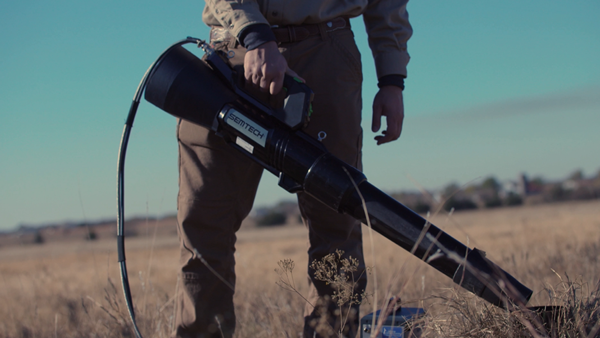 The ACR has published an experimental field-based methodology for quantifying the pre-plugging leak rate of an orphaned well prior to being plugged. The measurement methodology is similar in content to what we routinely do in our SEMTECH® PEMS business (combining gas analysis and flow measurements).
The ACR has published an experimental field-based methodology for quantifying the pre-plugging leak rate of an orphaned well prior to being plugged. The measurement methodology is similar in content to what we routinely do in our SEMTECH® PEMS business (combining gas analysis and flow measurements).
- Background measurements of methane are made in the vicinity of the well.
- The natural gas leak is drawn though an exhaust flow meter (EFM) under excess flow conditions by a large capacity fan (35 CFM).
- The diluted gas sample is extracted and measured using a high-performance methane specific TDLAS analyzer.
- The mass concentration of the leak is calculated and reported over pre-set averaging windows.
- Like our SEMTECH® PEMS products, the measurement system needs to have a large dynamic range (0.0005 to 30 CFM), high accuracy, minimal interferences from other gases present and be robust and portable for field use.
It is recognized that plugging all orphaned wells in the USA and Canada is very costly and the $4.7 billion funding made available in the recent 2021 Bipartisan Infrastructure bill will only scratch the surface. This project together with other non-governmental initiatives to reduce these emissions will all help in reaching our GHG reduction goals and this innovative example by ACR to generate durable, verifiable carbon-offset credits at the ACR is an excellent approach.
Dr. David Booker
Chief Technology Officer
Sensors, Inc.
Interested in a demo? Call or email Sensors today!
On the Horizon
Sensors regularly participates in many emissions measurement community activities. From hosting an annual conference that attracts both worldwide regulatory agencies and engine manufacturers to participating in trade shows, there is a wide array of opportunities to meet our team.
Gas Producers Association Midstream Conference
September 17-20, 2023
San Antonio, TX
CH4 Connections
October 4-6, 2023
Fort Collins, CO
Automotive Testing Expo North America
October 24-26, 2023
Suburban Collection Showplace, Novi, MI
2023 Orphan & Idle Wells Texas Conference
October 25, 2023
Houston, TX